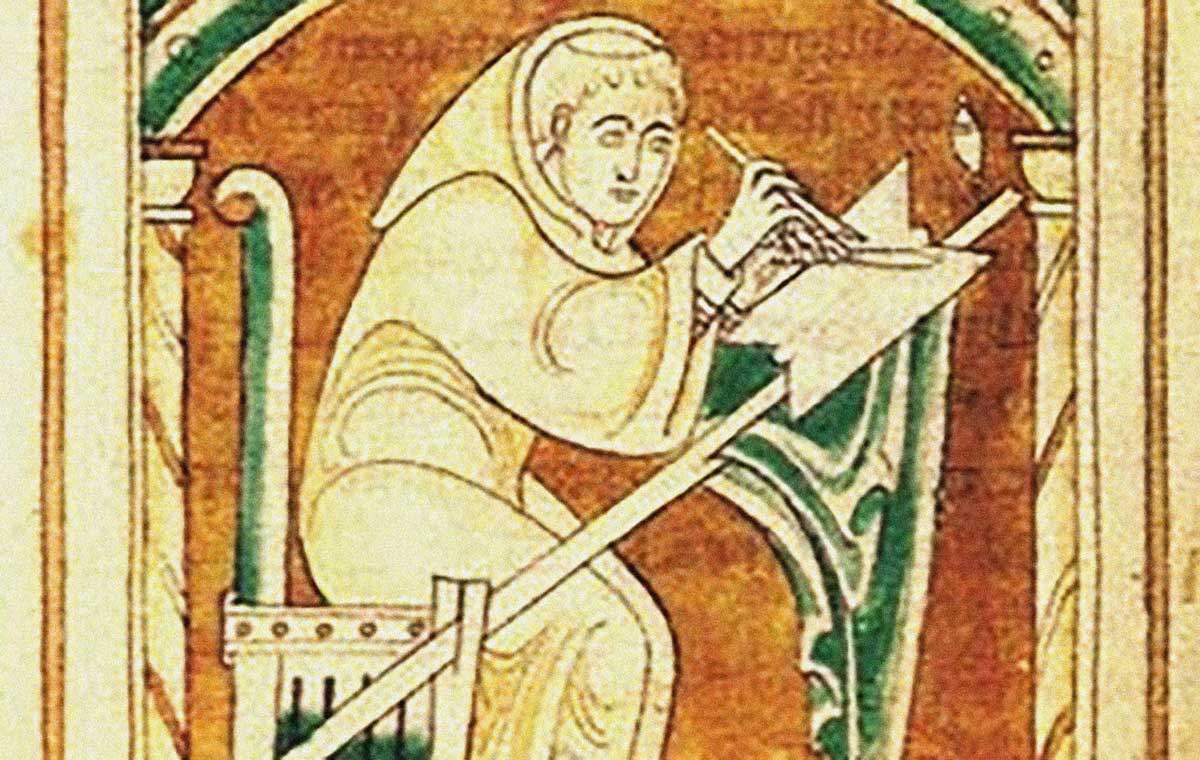Forging Ahead
The industry of fake charters, from the tenth century, to its zenith two centuries later.

Our ability to judge a medieval charter’s authenticity is comparatively new, dating from the advent, in the 19th century, of the study of the development of medieval script and of charters’ formulaic, legal language. Early medieval attempts at forgery, with their generally unsuccessful forays into script imitation and insecure understanding of formulation, seem obvious, even crude, to us now. But, as Levi Roach reminds us in his new book, most escaped detection for centuries.
The tenth century marked the beginning of an industry in fake charter production across Europe that reached its zenith in the 12th century. So prevalent had such forgeries become by the end of the tenth century that, as Roach explains, a comprehensive account is impossible. Instead, he chooses five case studies from around western Europe in an attempt to ‘balance the benefits of the bird’s and worm’s eye view’. Aptly, he begins with Worms in East Francia and Bishop Anno, before progressing to Bishop Pilgrim at Passau. Further chapters cover goings-on at Abingdon, Fleury and Vercelli. There are few scholars who can match Roach’s range and the result is impressive, based on deep familiarity both with primary materials and previous scholarship.
His aim is to make the material ‘less intimidating and arcane’, ‘at least comprehensible to a non-specialist’. To a large extent he succeeds; he writes engagingly and authoritatively, translates everything he quotes and provides a good deal of contextualisation so that we understand, quite literally, where these forgers were coming from. Occasionally, his efforts to simplify don’t come off; his description, early in the book, of the typical appearance and content of a charter doesn’t work in an early medieval English setting where one would look in vain for features he identifies as common, such as royal and bureaucratic monograms and the use of elongated letters at the head of certain sections.
There is plenty here for the specialist: the chapter on Abingdon convincingly does away with recent attempts to rehabilitate a series of charters from that house. Roach attacks them from several directions: their form and formulation is wrong, they are too long. More important, they are almost identically phrased, not a feature of this charter type in pre-Conquest England. He goes on pleasingly to include information habitually overlooked by commentators, from close attention to the form in which most Anglo-Saxon charters solely survive, the later medieval copy. Roach is therefore able to identify features of layout transmitted from (lost) fakes to later copies.
Roach sums up by emphasising that the purpose of these forgeries was less to win in court and more to increase the standing (local, regional, national) of the establishment that produced them. This explains why forgery was met with counter-forgery by rival houses rather than by challenge. The functions of these texts were ‘first and foremost social’, just as were the narrative histories produced at these same houses, often by the same people.
We might be able to judge a charter by its appearance, but one shouldn’t, of course, judge a book by its cover. Nevertheless, the encomiums on the back of this book run far beyond the usual double-edged platitude of ‘fills a much-needed gap’. Instead, a roll-call of the charter-study elite, not customarily easy to please, line up to commend its contents. It is hard to disagree.
Forgery and Memory at the End of the First Millennium
Levi Roach
Princeton University Press 360pp £35
Kathryn A. Lowe is Senior Lecturer in Old and Middle English at the University of Glasgow.